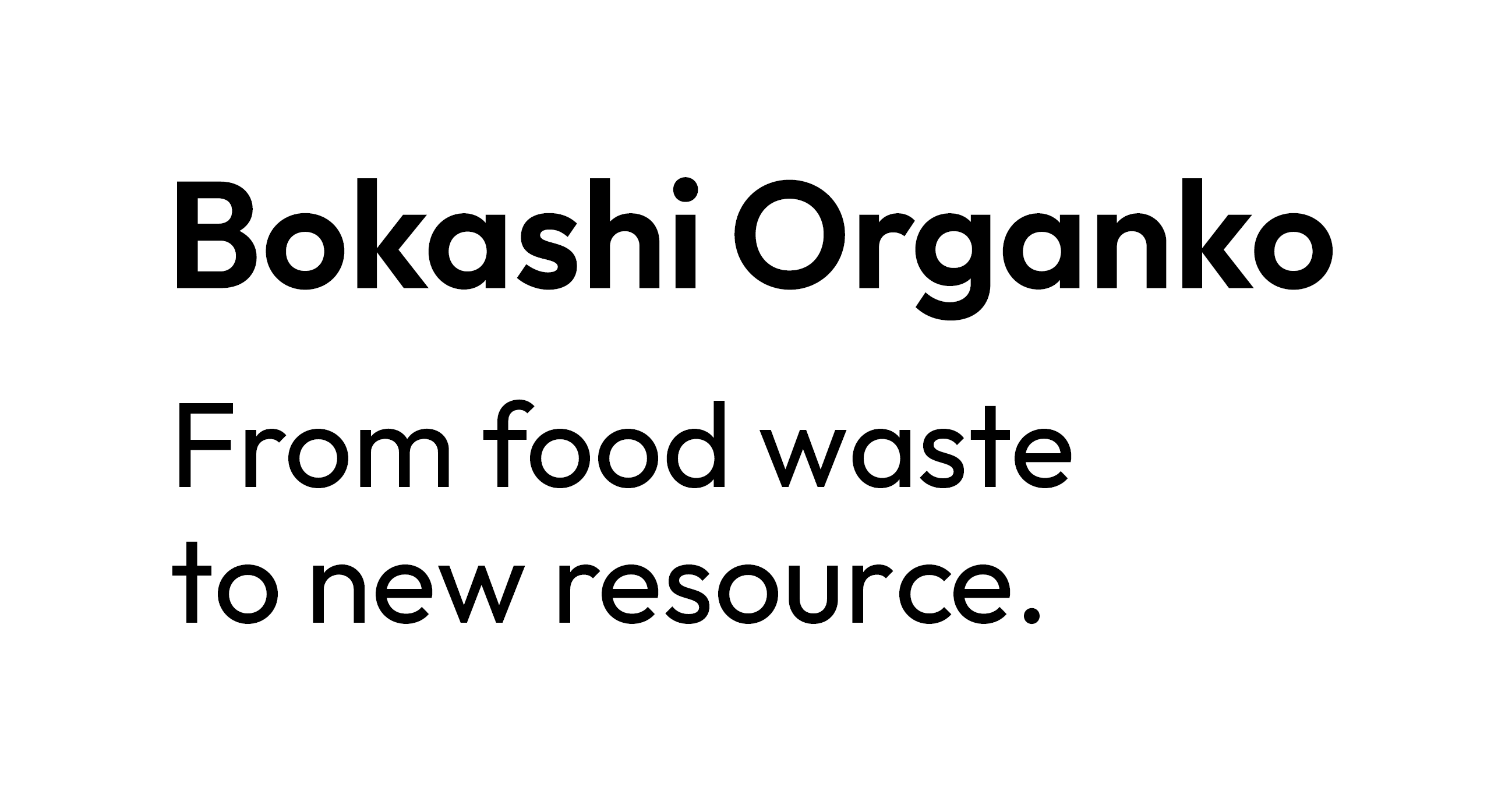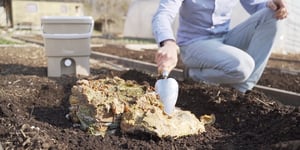If you know the basics of composting, you are aware that microorganisms play a crucial role in it. This means predominant species of microbes and conditions that enable them to process organic material are the key aspect. In today’s article, we take a closer look at the factors affecting composting. This translates to the factors that ensure proper conditions for specific kinds of microorganisms that will get the job done.
Furthermore, the factors affecting composting determine what kind of decomposition will take place (technically, it may not even be composting). Moreover, we will also cover a simple test that will help you determine whether or not the amount of one of the key factors affecting the composting process is optimal.
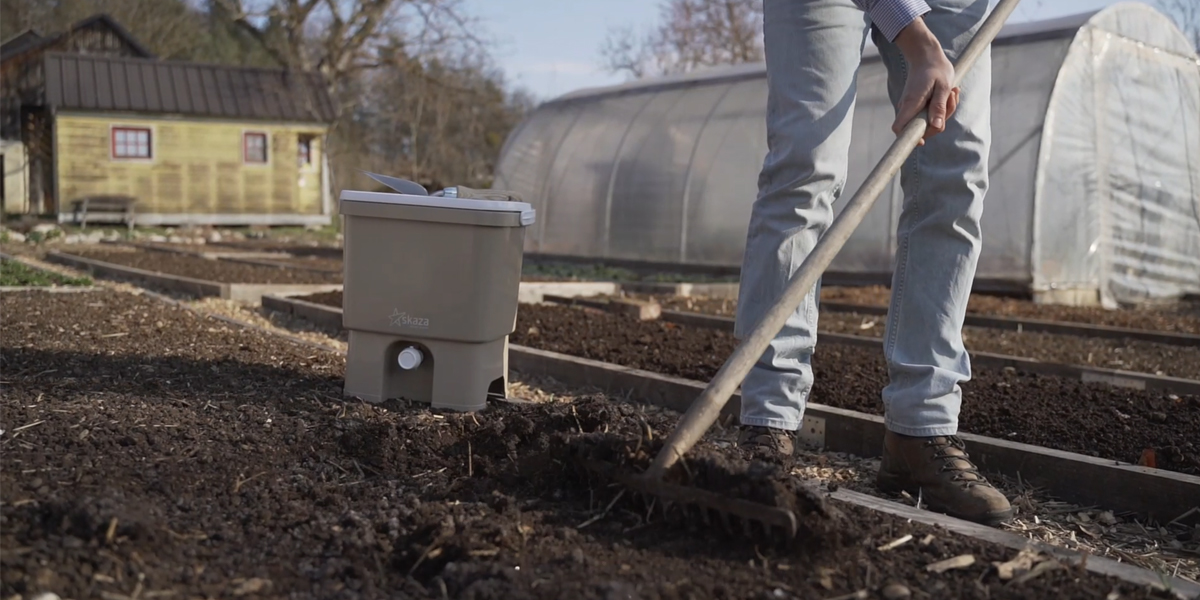
Which Are The 4 Key Factors Affecting Composting?
Without further ado, let’s list the 4 key factors affecting composting right away. They are water, carbon, nitrogen, and oxygen. Their amount or ratios will determine what types of microorganisms will take over the decomposing. The more ideal the conditions, the faster will microorganisms reproduce, and consequently, the more effective decomposition of organic material will be.
Water
Water (H2O) is essential for the survival of microorganisms. This is no surprise as their cells contain between 80 - 90 % of H2O. Moreover, water also serves as a medium for microorganisms to move around.
Since fungus is one of the commonly known microorganisms, it may be used as a perfect example of the importance of water. Have you ever seen how fast a fungus spreads in relatively moist bread? On the other hand, if we take a slice of bread and dry it, no fungus will appear on it. The same applies to other organic stuff.

How much water is needed for composting?
Now that we know that water is essential for composting, let’s define the required amount.
When considering hot composting, the ideal humidity level of the compost pile should be between 45 - 55%. However, if cold composting (vermicomposting) is in question, then the humidity should be around 65%.
How To Determine If Compost Is Moist Enough?
There is a very quick and easy way to determine whether or not your compost is moist enough.
While determining the ratio between carbon and nitrogen is rather tricky, there is a very simple way to determine if there is enough or too much water in a compost mixture. The best thing is that it requires no equipment.
All you need is your hand. Simply grab a portion of the composting material and make a fist. If the water starts dripping at the bottom of your palm, there is too much water in the mixture. On the other hand, if not a single drop of water comes out of the mixture when you squeeze it, it is not moist enough.
Ideally, you want just a couple of drops to appear when the above technique is applied.
Carbon & Nitrogen
Carbon and nitrogen are the next two key factors affecting composting. They are the core elements of various organic compounds and thus the essential building blocks of all cells within microorganisms.
The reason why we address Carbon (C) and Nitrogen (N) together in the same subsection lies in the fact that their content in organic materials is expressed with their ratio (C:N) and not with the absolute numbers.
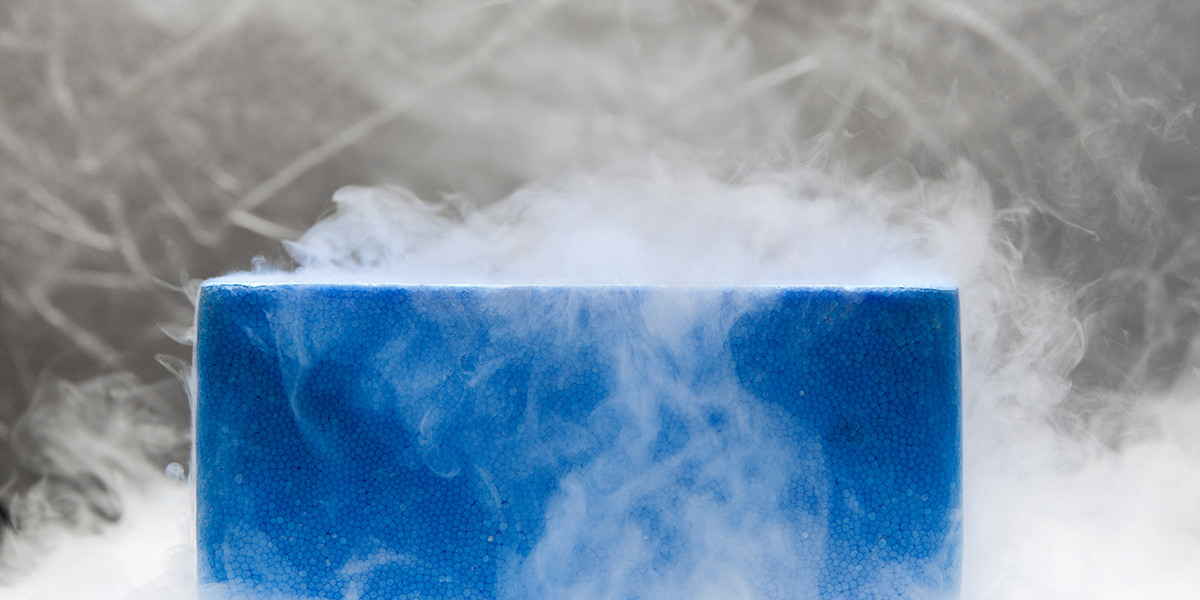
There is about 45 to 55 % of carbon and about 1 to 4 % of nitrogen in an average dead organic material. However, the exact C:N ratio varies quite noticeably between different materials put into the composting mix. Moreover, unlike the amount of water, the C:N ratio is much more difficult to control.
However, there is a slightly simplified method to it - “browns” vs. “greens”. A good ratio is 3:1 or 4:1 (“brown” : “greens”). Below you can find a list of common “greens” and “brown” materials.
Common “greens” materials:
- Fruit and vegetable scraps
- Coffee grounds/tea bags
- Grass clippings
- Trimmings from perennial and annual plants
- Vegetable and fruit scraps
- Annual weeds (the ones that haven’t set seed)
- Animal manures (herbivores only)
- Eggshells
- Seaweed
Common “brown” materials:
- Pine needles
- Fall leaves
- Straw or hay
- Twigs, chipped tree bark/branches
- Sawdust
- Drayer lint
- Corrugated cardboard (no waxy/slick paper coating)
- Cotton fabric
- Corn stalks
- Paper (newspaper, writing/printing paper, napkins, paper plates, coffee filters)
Oxygen
By this point, we have the moist (water) and the organic material (carbon & nitrogen), which is enough to start the process of decomposition. However, oxygen also plays a very important role since it determines what kind of microorganisms will be doing the work.

When there is oxygen present, the process relies on aerobic microorganisms, which cannot survive without oxygen. They use O2 to provide energy based on aerobic cell breathing. In contrast, anaerobic microorganisms do not need oxygen (often, they die when exposed to it). There is also a ‘mid ground’ - the facultative microorganisms, which use oxygen if available but can also survive without it.
The concentration of oxygen determines the line between aerobic and anaerobic decomposition processes. When the latter is above 5 mg/l, we talk about aerobic decomposition. On the other hand, when the O2 concentration is below 5 mg/l, anaerobic decomposition takes place.
Types Of Organic Material Decomposition
Now it’s time to put the above together and ensure you clearly understand different types of organic material decomposition processes.
Note: This kind of division of organic material decomposition makes no sense in nature. There, all types are transitioning from one to another naturally. However, when composting for gardening or farming, knowing these things is rather essential.
If you remember, water and organic material (C and N) are prerequisites for organic material decomposition. Once we have that, oxygen (or lack of it) determines what kind of process will take place.
If the concentration of O2 is above 5 mg/l, aerobic decomposition takes place. This process is officially known as composting. Furthermore, if there is enough heat present (due to the process), we talk about hot composting. On the other hand, if there is no sufficient heat, we have a cold composting on our hands.
If the concentration of O2 is below 5 mg/l, anaerobic decomposition prevails. And it can further be divided into fermentation or rotting. While the process of fermentation stimulates life, the rooting does not and is considered as a ‘bad’ kind of decomposition.
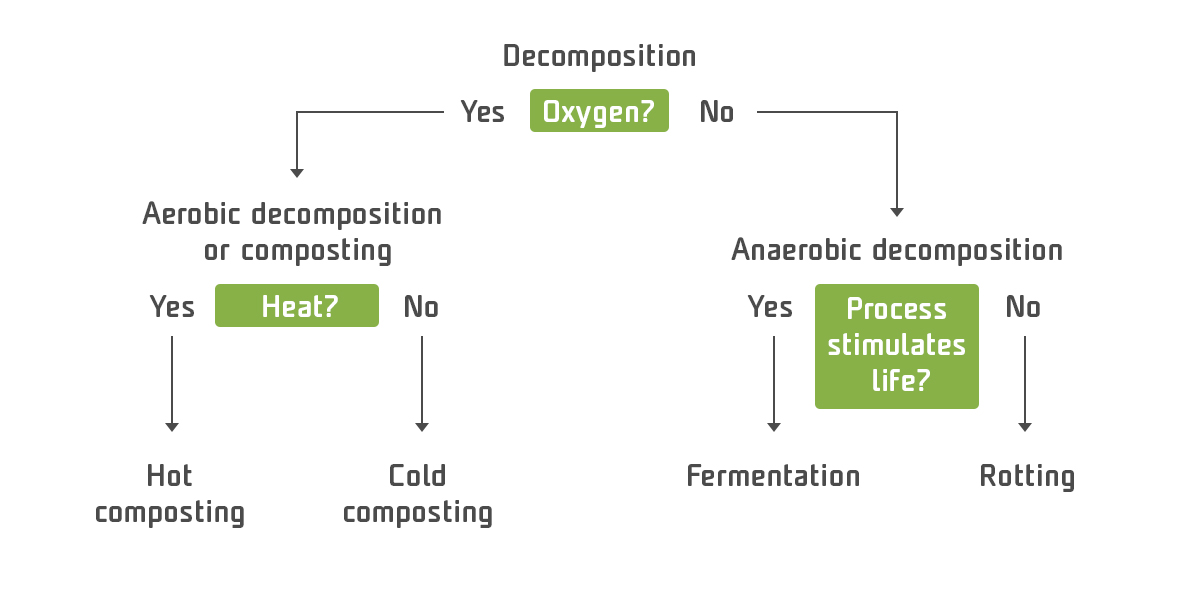
All of the above can be schematically viewed below:
- Prerequisites: ORGANIC MATERIAL (including water, N, and C):
- O2 conc. > 5mg/l → AEROBIC DECOMPOSITION = COMPOSTING:
- Heat: Hot composting
- No heat: Cold composting
- O2 conc. < 5mg/l → ANAEROBIC DECOMPOSITION:
- Stimulates life → FERMENTATION (This is the best solution for indoor ‘composting’; we use that with our Bokashi Organko.)
- Does not stimulate life → ROTTING
- O2 conc. > 5mg/l → AEROBIC DECOMPOSITION = COMPOSTING:
Final Thoughts
This wraps things up. You now know what the factors affecting composting are. You also know that water, carbon, and nitrogen are prerequisites for the decomposition of organic materials to take place. At the same time, the amount of oxygen determines what kind of microorganisms will be in charge of decomposition. Furthermore, you are now informed on how to determine if the composting mixture has enough water or not by using a very simple test.
So, that is it for today. Stay awesome and compost your organic waste, because there are many advantages of composting in general!

